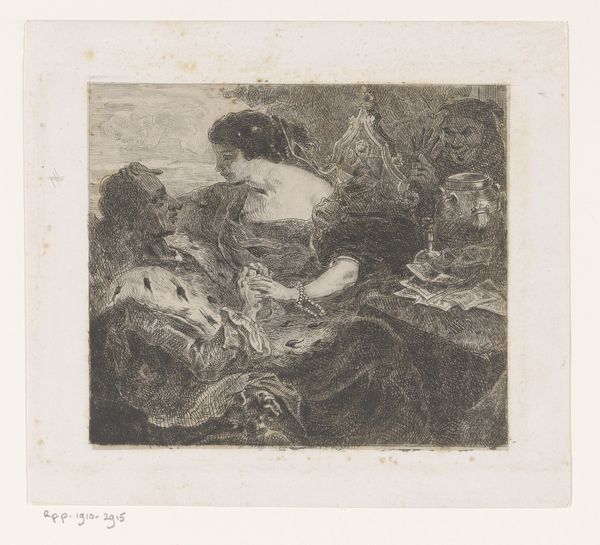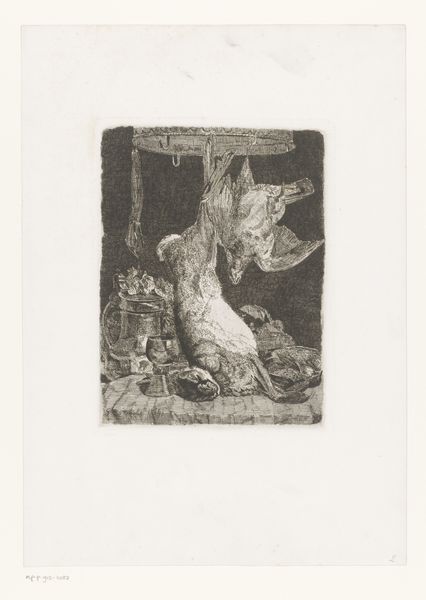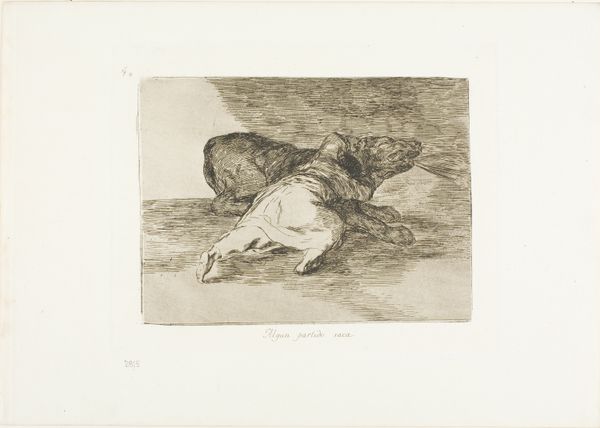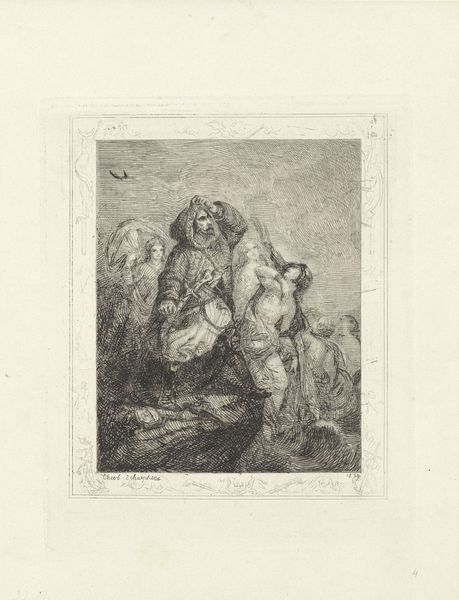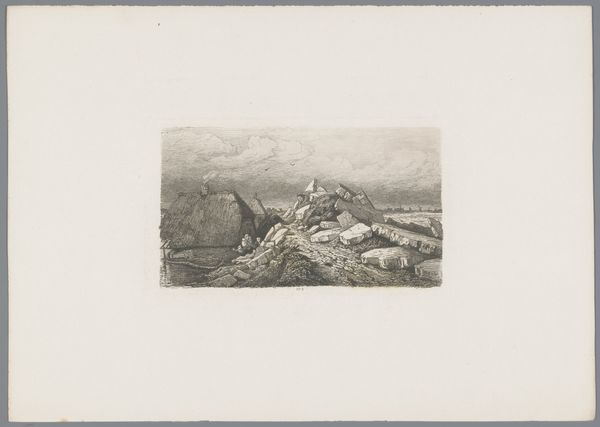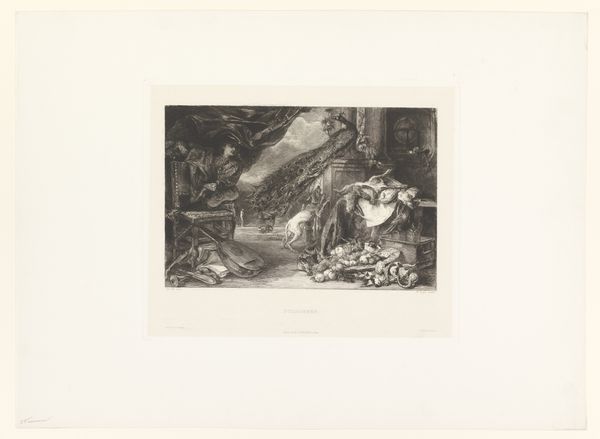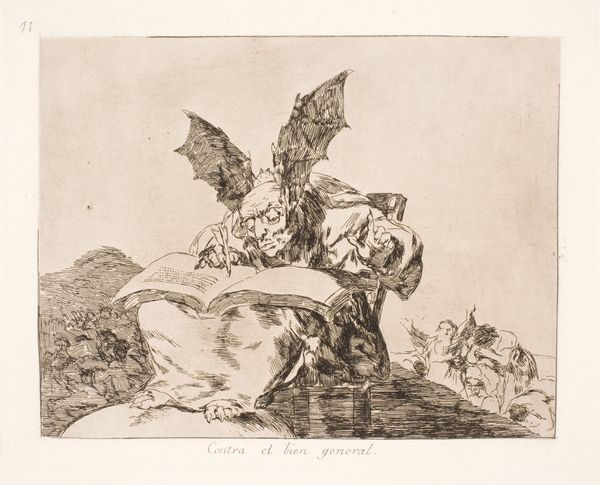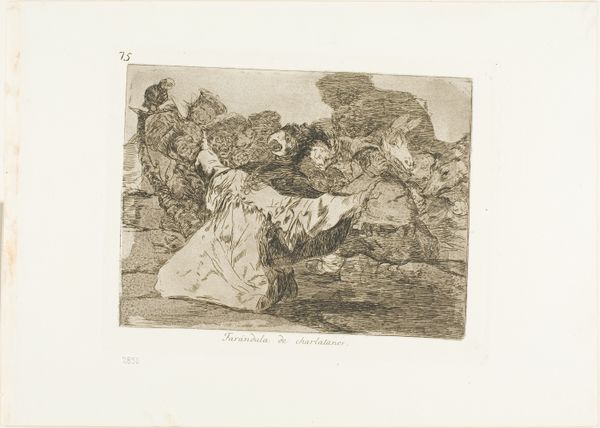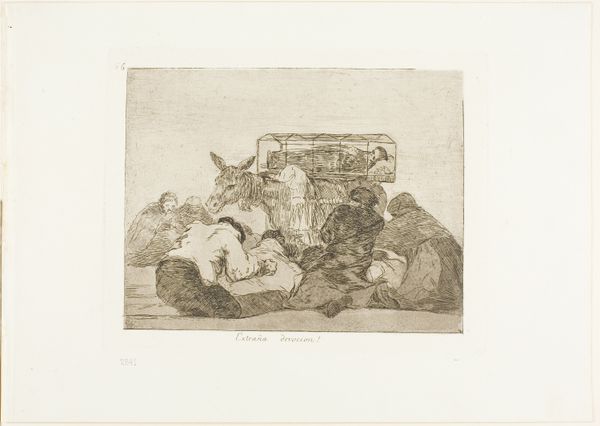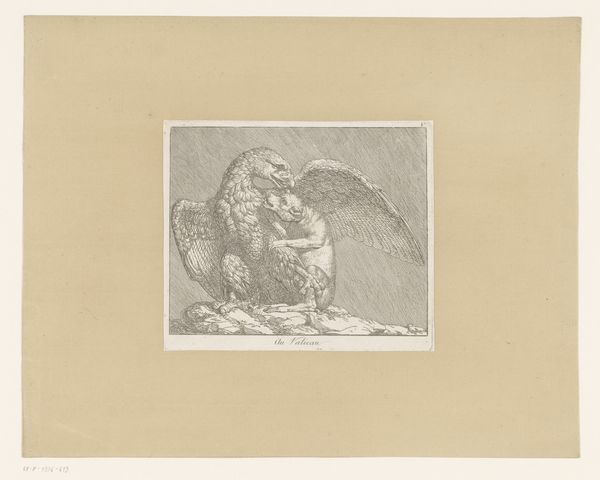
Feline pantomime, plate 73 from The Disasters of War Possibly 1815 - 1863
0:00
0:00
drawing, print, etching, paper
#
drawing
#
narrative-art
# print
#
etching
#
war
#
paper
#
romanticism
#
history-painting
Dimensions: 155 × 199 mm (image); 175 × 216 mm (plate); 240 × 337 mm (sheet)
Copyright: Public Domain
Curator: Immediately, I'm struck by the strange juxtapositions—the animals acting almost symbolically. Editor: Yes, "Feline pantomime, plate 73 from The Disasters of War", by Francisco de Goya, believed to have been created between 1815 and 1863, is a deeply unsettling print, currently housed here at the Art Institute of Chicago. The sharp etching work definitely reinforces a sense of foreboding. Curator: Etching, exactly. You can see how the acid bites into the metal, leaving those expressive, almost frantic lines. It's interesting to consider the role of printmaking itself—as a means of disseminating these images of war to a wider audience. This wasn’t about individual consumption, but a shared experience. Editor: Absolutely. Consider the historical context: Goya witnessed firsthand the brutality of the Napoleonic invasion of Spain. The print needs to be understood through the lens of political resistance. The animals—the cat and the owl—almost mock the prostrating figures in the foreground. Could they be read as symbols of the Church, the nobility, their indifference? Curator: Interesting. What is the labor involved to disseminate such a scene? The social impact that the piece leaves through consumption—are people in despair, action, or silent observation? Editor: Perhaps it’s a prompt to action precisely by forcing its audience into observing. Goya presents a bleak social hierarchy to indict injustice and the disempowerment of marginalized bodies, reflecting both a specific historical event and broader structures of power. Curator: I agree. He really does push the capabilities of the medium. What happens if the materials erode—can this process of dissemination have new readings? Editor: Thinking about its accessibility shifts the focus from pure aesthetics to its role in fueling social change, right? Which speaks volumes about its importance in understanding the legacy of romanticism, as a political and emotional reckoning of society. Curator: Indeed. Thinking about these images as commodities changes how we analyze labor itself in the context of revolution and observation. Editor: Well, that changes how I view this. Goya’s technical choices definitely amplify its potent critique. Curator: Precisely. The materiality of the work—both paper and line—embodies a message to deliver a unique perspective and impact people’s perspective on war.
Comments
No comments
Be the first to comment and join the conversation on the ultimate creative platform.

